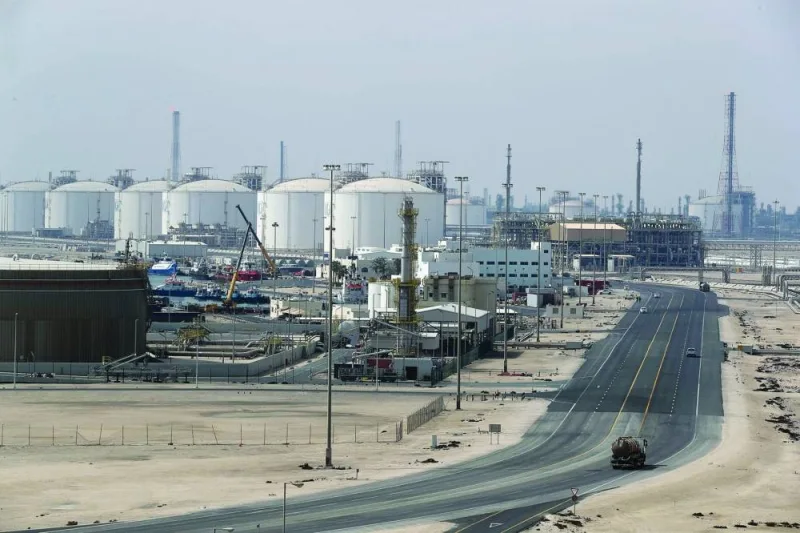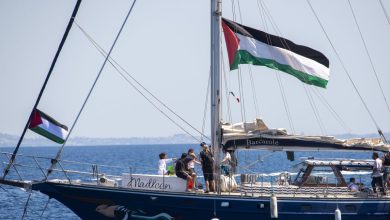Global South
Qatar accounts for 75% of Middle East region’s LNG liquefaction capacity, says GECF

A general view of the Ras Laffan Industrial City, Qatar’s principal site for the production of liquefied natural gas and gas-to-liquids (file). The potential for Qatar’s LNG exports envisions a growth of 2.6 times, reaching 208mn tonnes by 2050 from the current level of 77mn tonnes, according to the GECF.
Qatar currently accounts for more than 75% of Middle East region’s LNG liquefaction capacity, the Gas Exporting Countries Forum (GECF) has said in a report.
Currently, the region possesses 101mn tonnes per year (mtpy) of liquefaction capacity, “primarily dominated” by Qatar’s 77 mtpy, GECF said in its ‘Global Gas Outlook 2050’.
Plans are in progress from 2022 to 2050 to add approximately 130 mtpy of extra LNG liquefaction capacity to the region, with Qatar leading expansion efforts, GECF noted.
The primary force propelling natural gas exports from the Middle East is set to be growth in LNG supplies, notably led by Qatar, it said.
The utilisation rate of this increased LNG liquefaction capacity is projected to be high, surpassing 90% by 2050. Furthermore, there are plans to consider an extra 1 mtpy of liquefaction facilities in Oman, along with the prospective development of LNG liquefaction facilities in Iraq post-2030s and in Iran post-2040s.
Currently, 33 mtpy of liquefaction capacity is under construction at Qatar’s NFE expansion project. Additionally, the FEED work is underway on the NFS expansion project, which would add a further 16 mtpy.
Regarding the pipeline trade within the Middle East, the Dolphin gas pipeline stands out as the largest in the region. Linking the North Field in Qatar to the UAE and Oman, this pipeline has a capacity of 33 bcm/year, operating at around 60% of this level.
The potential for Qatar’s LNG exports envisions a growth of 2.6 times, reaching 208mn tonnes by 2050 from the current level of 77mn tonnes, with pipeline exports reduced from the present 20 bcm.
The UAE participates in both the export and import of LNG, alongside pipeline gas imports. In 2022, the UAE exported 7 bcm of LNG and predominantly sourced gas imports from Qatar via the Dolphin gas pipeline, totalling 18.7bcm, GECF said.
LNG exports are facilitated through the Das Island liquefaction plant in Abu Dhabi, possessing an overall capacity of 5.6Mtpy.
By 2050, the UAE is projected to become a net exporter of LNG, with its overall LNG exports expected to reach 13Mt, starting with an increase from the current 5.5Mt after 2036.
According to GECF, the primary destination for Middle Eastern LNG may continue to be Asia, with that region set to have an even more significant role in the long run.
By 2050, the Asia Pacific region is poised to receive 186mn tonnes of LNG sourced from the Middle East, constituting over 90% of all LNG exported from that region, GECF said.
Currently, the region possesses 101mn tonnes per year (mtpy) of liquefaction capacity, “primarily dominated” by Qatar’s 77 mtpy, GECF said in its ‘Global Gas Outlook 2050’.
Plans are in progress from 2022 to 2050 to add approximately 130 mtpy of extra LNG liquefaction capacity to the region, with Qatar leading expansion efforts, GECF noted.
The primary force propelling natural gas exports from the Middle East is set to be growth in LNG supplies, notably led by Qatar, it said.
The utilisation rate of this increased LNG liquefaction capacity is projected to be high, surpassing 90% by 2050. Furthermore, there are plans to consider an extra 1 mtpy of liquefaction facilities in Oman, along with the prospective development of LNG liquefaction facilities in Iraq post-2030s and in Iran post-2040s.
Currently, 33 mtpy of liquefaction capacity is under construction at Qatar’s NFE expansion project. Additionally, the FEED work is underway on the NFS expansion project, which would add a further 16 mtpy.
Regarding the pipeline trade within the Middle East, the Dolphin gas pipeline stands out as the largest in the region. Linking the North Field in Qatar to the UAE and Oman, this pipeline has a capacity of 33 bcm/year, operating at around 60% of this level.
The potential for Qatar’s LNG exports envisions a growth of 2.6 times, reaching 208mn tonnes by 2050 from the current level of 77mn tonnes, with pipeline exports reduced from the present 20 bcm.
The UAE participates in both the export and import of LNG, alongside pipeline gas imports. In 2022, the UAE exported 7 bcm of LNG and predominantly sourced gas imports from Qatar via the Dolphin gas pipeline, totalling 18.7bcm, GECF said.
LNG exports are facilitated through the Das Island liquefaction plant in Abu Dhabi, possessing an overall capacity of 5.6Mtpy.
By 2050, the UAE is projected to become a net exporter of LNG, with its overall LNG exports expected to reach 13Mt, starting with an increase from the current 5.5Mt after 2036.
According to GECF, the primary destination for Middle Eastern LNG may continue to be Asia, with that region set to have an even more significant role in the long run.
By 2050, the Asia Pacific region is poised to receive 186mn tonnes of LNG sourced from the Middle East, constituting over 90% of all LNG exported from that region, GECF said.







